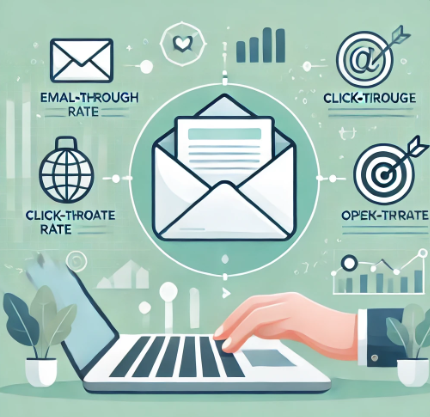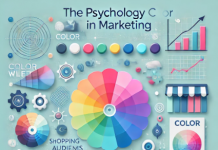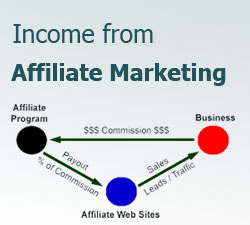 In a world flooded with digital noise, email marketing remains one of the most powerful tools for connecting with your audience. But let’s be honest—getting someone to open an email is one battle, and getting them to click is another. The inbox is a crowded place, filled with newsletters, promotional offers, and updates competing for attention. So, what sets apart emails that get opened and clicked from those that get ignored or sent straight to the trash?
In a world flooded with digital noise, email marketing remains one of the most powerful tools for connecting with your audience. But let’s be honest—getting someone to open an email is one battle, and getting them to click is another. The inbox is a crowded place, filled with newsletters, promotional offers, and updates competing for attention. So, what sets apart emails that get opened and clicked from those that get ignored or sent straight to the trash?
It’s not just about catchy subject lines or flashy designs (though those help). Effective email marketing is about understanding your audience, delivering value, and creating an experience that feels personal, relevant, and timely. In this guide, we’ll dive deep into the strategies, psychology, and best practices that can elevate your email marketing game. This isn’t about quick hacks—it’s about building sustainable engagement through thoughtful communication.
The Foundation of High-Performing Emails
Before we get into tactics, it’s important to lay the foundation. High-performing emails share three key characteristics:
- Relevance: The content resonates with the recipient’s needs, interests, or pain points.
- Personalization: It feels like the email was written specifically for the reader, even if it was automated.
- Value: Every email provides something of worth—whether it’s information, an offer, or simply entertainment.
Think of your inbox. What makes you open certain emails and ignore others? It’s usually because those emails hit at least one of these points. Now, let’s break down how to achieve that consistently in your campaigns.
Crafting Subject Lines That Get Opened
Your subject line is your first—and sometimes only—chance to capture attention. It’s like the headline of an article; if it doesn’t intrigue the reader, the content inside doesn’t matter.
1. Keep It Short and Punchy
Most people skim their inboxes on mobile devices. Aim for 6-10 words or under 50 characters to ensure your subject line doesn’t get cut off.
Example: “Unlock Your Exclusive Discount” or “3 Tips to Boost Your Sales Today”
2. Spark Curiosity, But Don’t Be Clickbait-y
People love a good mystery, but if your subject line promises something the email doesn’t deliver, it’ll damage trust.
Hint: Use open-ended phrases like “You’ll never guess what happened…” only if the content justifies it.
3. Personalize When Possible
Emails with personalized subject lines are 26% more likely to be opened. Use the recipient’s name or reference their recent activity.
Example: “John, your free guide is ready!”
4. Test and Optimize
What works for one audience might not work for another. A/B testing subject lines can reveal insights into what your specific audience responds to.
Writing Email Content That Gets Clicked
Getting someone to open your email is step one. Keeping their attention and motivating them to take action is where the real work begins.
1. Start Strong with an Engaging Introduction
The first line of your email often shows up as a preview in the inbox, so make it count. Get straight to the point, and set the stage for what’s to come.
Example: “Tired of wasting hours on manual reports? We’ve got a solution that saves time and boosts accuracy.”
2. Speak Like a Human, Not a Corporate Robot
People connect with people, not faceless brands. Write in a conversational tone as if you’re speaking directly to the reader. Avoid jargon and overly formal language unless it’s appropriate for your audience.
3. Focus on Benefits, Not Features
Instead of just listing what your product or service does, explain how it improves the reader’s life.
Bad: “Our software has advanced analytics features.”
Better: “Make data-driven decisions faster with real-time analytics at your fingertips.”
4. Use Clear and Compelling CTAs (Calls-to-Action)
Your CTA should tell the reader exactly what you want them to do next—whether it’s downloading an ebook, signing up for a webinar, or making a purchase.
<button style=”background-color: #FF5733; color: white;”>Get Your Free Trial Now</button>
Advice: Make your CTA button stand out visually, and place it strategically—ideally above the fold and again at the end for longer emails.
Personalization Beyond Just Names
Personalization is more than using the recipient’s first name. It’s about delivering content that feels tailored to their interests and behavior.
- Behavior-Based Triggers: Send follow-up emails based on user actions, like visiting a specific product page or abandoning a cart.
- Dynamic Content: Show different content blocks to different segments within the same email.
- Segmentation: Group your audience based on demographics, purchase history, or engagement level.
Optimizing for Deliverability
No matter how great your emails are, they’re useless if they land in the spam folder. Here’s how to improve deliverability:
- Authenticate Your Domain: Set up SPF, DKIM, and DMARC records to prove you’re a legitimate sender.
- Clean Your List Regularly: Remove inactive subscribers to maintain a healthy sender reputation.
- Avoid Spam Trigger Words: Phrases like “FREE!!!” or “100% guaranteed” can raise red flags with spam filters.
Measuring Success: Metrics That Matter
To improve your email campaigns, you need to track the right metrics:
- Open Rate: Indicates how effective your subject line and sender name are.
- Click-Through Rate (CTR): Measures how compelling your content and CTAs are.
- Conversion Rate: The ultimate measure of success—did the email lead to the desired action?
- Unsubscribe Rate: High rates may indicate irrelevant content or over-emailing.
Real-World Example: The Power of Personalization
A SaaS company struggled with low engagement rates. By shifting from generic monthly newsletters to behavior-based emails, they achieved:
- 30% higher open rates with personalized subject lines.
- 40% more clicks by segmenting their audience based on user activity.
- A 25% increase in free trial sign-ups through clear, benefit-driven CTAs.
Common Mistakes to Avoid
- Overloading with Information: Keep your message focused and concise.
- Ignoring Mobile Optimization: Over 50% of emails are opened on mobile devices.
- Sending Without Testing: Always preview and test your emails before sending.
- Neglecting the Unsubscribe Link: Make it easy for people to opt-out to avoid spam complaints.
Conclusion
Email marketing isn’t dead. It’s evolving. In a world where everyone’s inbox is crowded, the emails that stand out are those that feel personal, provide value, and respect the recipient’s time. By focusing on relevance, authenticity, and continuous testing, you can create campaigns that don’t just get opened and clicked—they get remembered.
Remember, at the heart of every email is a simple idea: it’s one person talking to another. Keep it human, keep it helpful, and the results will follow.












